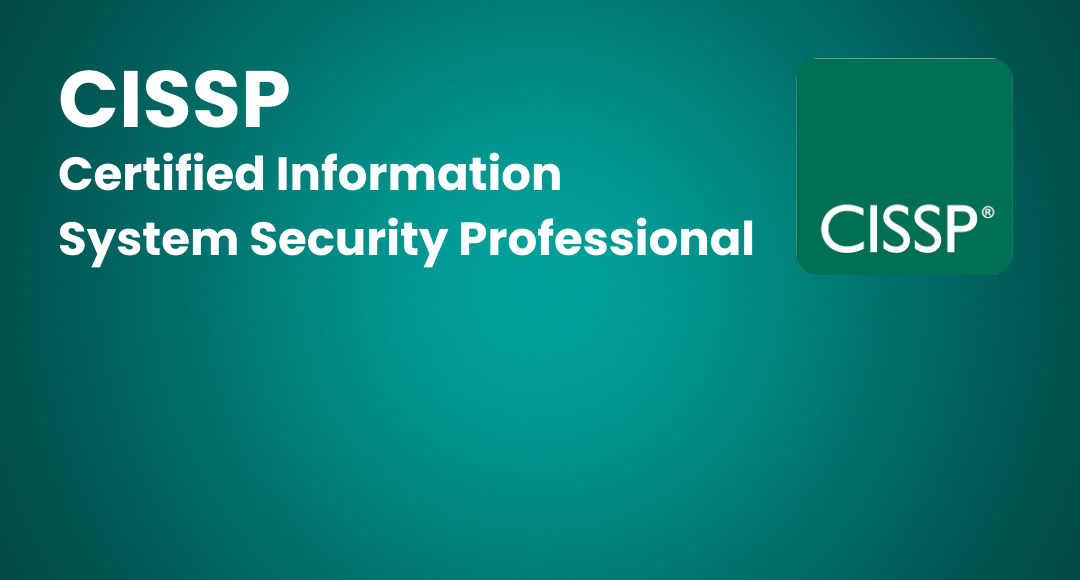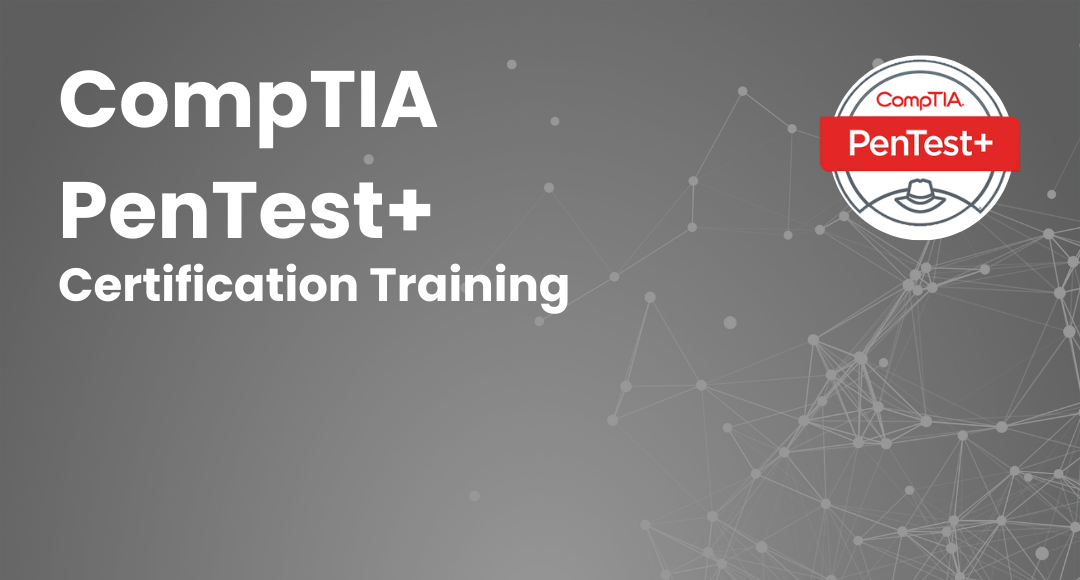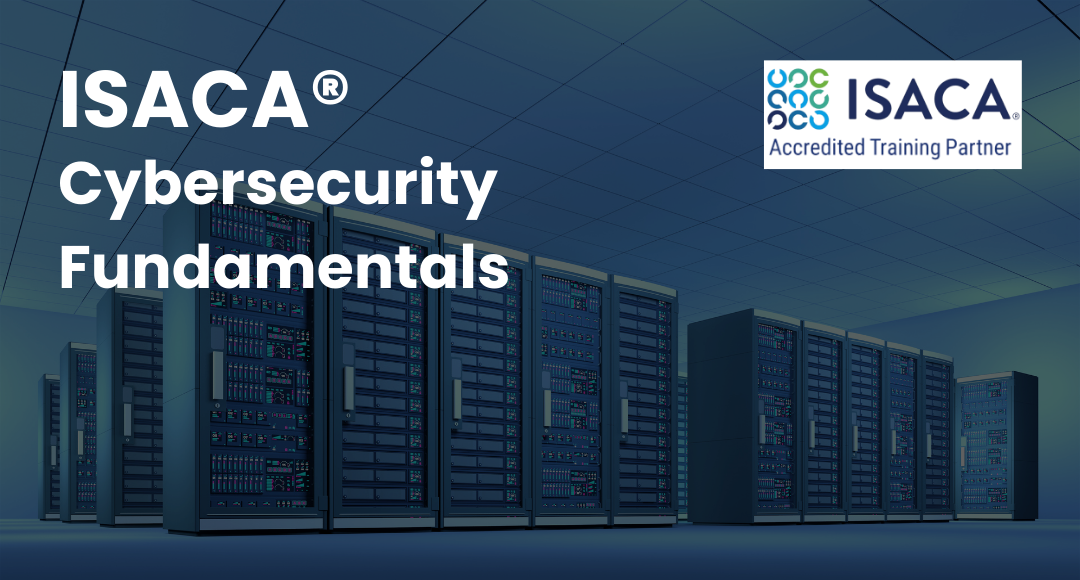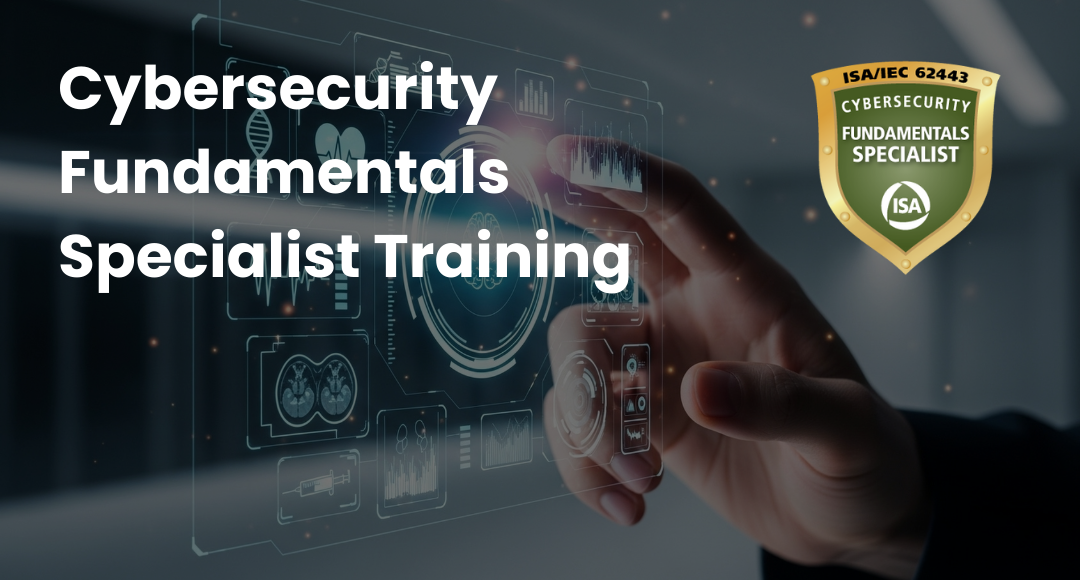Data loss Prevention in Cyber Security Explained
-
 By Niveditha P
By Niveditha P - Published on Jun 9 2023

Table of Contents
Introduction to Data Loss Prevention
Data Loss Prevention (DLP) is a technology used to secure data of an organization’s network, communications, emails, web applications, and data transfer mechanisms like FTP i.e. File transfer protocol.
DLP benefits companies on a larger scale, where it is used as a strategy by most companies. Companies that use DLP have a security strategy to detect, prevent data loss, and cyber-attacks. DLP is also used to eliminate unwanted data that will harm the system's security.
Data leakage prevention solutions are commonly used to classify and prioritize data security. The common features of DLP are as follows,

Monitoring: Provides more visibility about who is accessing the system's data and from where.
Filtering: data is filtered to restrict suspicious or unidentified activity.
Reporting: recording and maintaining reports will be done, when instant response and auditing will be needed.
Analysis: identifying weakness, suspicious behavior, and providing forensic context to security teams.
With these aspects, Data loss is prevented and managed efficiently.
How does DLP work?
DLP contains two-main technical approaches to work on the network,
Contextual analysis: This DLP technique is used only to format metadata or properties of the document like header, size, references, etc.
Content awareness: It determines if there is any sensitive information in the document. Reading and analysis of data are done for the whole document.
Modern DLP solutions combine these two to give better outcomes in cyber security. That is used for examination of data context analysis, if it’s insufficient or not fulfilling the needs, then content awareness is used to explore the data. There are multiple techniques used to trigger content analysis,
- Ruler-Based/Regular expression: The common analysis technique used in data loss prevention involves the analysis of documents. Where the content will be analyzed using certain rules and regular expressions. For example, if you are searching for social security numbers or credit card numbers. This technique acts as a filter and configures and processes the results. But it will be combined with additional techniques to give the result.
- Database Fingerprinting: Also known as exact data matching. That creates a fingerprint of data and searches for the exact match in the database dump or with the database that would be currently running.
- Exact file matching: It creates a hash of the entire file/document and looks for a file that matches the hash or fingerprint. This technique is very accurate, but it can’t be used for files that contain multiple versions.
- Partial Document Matching: Looks for a complete or partial match on specific files with multiple versions of forms that have been filled out by different users.
- Conceptual/Lexicon: Combining the use of lexical rules, dictionaries, and different taxonomies the DLP solution can identify concepts that contain sensitive information in unstructured data.
- Statistical Analysis: Machine learning algorithms are used for the analysis of data. The data or the content that violates a policy or indicates sensitive data will be addressed using the algorithm.
- Pre-built categories: With rules and dictionaries for sensitive data, such as PCI protection, HIPAA, etc. will be prevented using these pre-built devices.
Data loss prevention is classified into three types, where all the three deliver same results with different methods.
Types of DLP

Network DLP: Data loss prevention in-network helps to put a secure perimeter around the data that is in movement. In simple terms, network DLP is implemented on a system/network to monitor all the incoming and outgoing. It decides whether the data needs to be protected, monitored, or blocked.
Benefit: DLP can be applied on any device that is connected based on the given network.
Endpoint DLP: It monitors all endpoints i.e. servers, computers, laptops, mobile phones, and any other device on which data is used, moved, or saved. For example, USB connectors are used to connect PC and Phones, or pen drives are used to transfer data or copy data.
Benefit: This DLP software always protects data even if the system is offline, no matter if it’s a company’s network or a public network.
Cloud DLP: This DLP network service gives much stronger visibility and protection for sensitive data that will be imposed on SaaS and IaaS cloud services. Cloud data loss prevention network service includes social security, where data like emails, financial details, contacts will be made secure where access will be given to admin only.
Benefit: There is no requirement for software and hardware devices. This data loss protection server is stronger compared to other DLP solutions.
Read more about protocols taken to control cyber-attacks.
Advantages of Data Loss Prevention:
Having data loss prevention in your system will provide the following advantages,
- Data loss prevention is effective for outsider and insider threat detection. DLP uses a firewall and gives limited access to the internal network. Outside attacks are detected by DLP software using antivirus scans to find Trojans installed on endpoints and malware that enters a company’s network through email attachments. It reduces inside threats through continuous data monitoring.
- Data loss prevention solution prevents attempts to copy or send sensitive data without authorization. The information that will be termed as sensitive will be determined using data matching, database fingerprinting, rule and regular expression matching, conceptual definitions, and keywords.
- DLP system provides corporations with visibility about what is going out of the system/company. It stops users from sending out sensitive data. By using the DLP system, you can know who is trying to send out the information, which will help to stop data breaches before they can cause too much damage.
- Some of the DLP’suse machine learning algorithms to identify sensitive data. Internal content analysis is done continuously, to help data that needs to be protected. And the same technology detects unusual access requests and data exchange between stakeholders/employees.
Measures to Take in Data Loss Prevention
At times even if there is high security, insiders, as well as outsiders/hackers, might get into the database. Having the mindset that the data is secure will do no good because unexpected data breaches can take place at any time. Measures should be taken and often examine also needs to be done to keep data secure.
Hence while using DLP solution, look out for the following:
- If one is using a DLP system they should know where the data is stored or else it’s no use.One should also take inventory for both classified and public data. The DLP solutions provide automated scanning and detection of sensitive data inside the combined network. But due to specific workflows and data types, it will be better if data is handled manually.
- DLP system is generally adopted by businesses. If a company/business is committed to buying a DLP system then they should be ready to work hard has DLP is a hard deployment. Because of that understanding which data is worth monitoring and analyzing whether your department of work needsa comprehensive overview of data flows.
- Users get access to various privileges when using a network. So auditing all the right needs for users and making sure that data loss prevention can distinguish a regular user from a privileged one.
- Defining and implementing a comprehensive data loss prevention policy takes a lot of time. An unclear policy causes problems while incorporating the DLP system into a company’s cyber security system and adds expenses.
Data Loss Prevention Tools
Data loss prevention tools are helpful to prevent intrusion in the system and protect data. Here is a list of DLP software tools used in the prevention of data loss,

☀ SolarWinds data loss prevention
This data leakage prevention tool assists to secure data. It acts as a shield against accidental or malicious data loss. It also automates user access and activities and responds to cynical activity by investigating user events that will balance out the system needs.
It is a strong solution for larger networks, where it supports data loss prevention and monitors to support multiple standard agreements. And it saves time by creating simple visuals for a user to understand better.
☀ Symantec Data Loss Prevention
This tool/system offers data protection for endpoints, networks, cloud resources, and files from a central server.
☀ Check Point Data Loss Prevention
A collection of security products for different system services use data loss prevention as an immense protection strategy. This tool acts as SaaS i.e. Software as a Service.
☀ Teramind DLP
This tool focuses on user activity and describes to spot behavioral changes that indicate malicious activity or to discover sensitive data. It is also offered to be a SaaS or a virtual application.
☀ Digital Guardian Endpoint DLP
It acts as a data protection solution that covers windows, macOS, and Linux. For which the cloud acts as a central coordinating server.
☀ Code42 Insider
This specialized cloud-based service spots insider threats and contains a system recovery process, to redeem from loss and destruction.
☀ CA data protection
This tool is designed to protect OS i.e. operating systems mainframes that should be delivering two modules data discovery and security policy enforcement.
☀ Comodo MYDLP
This data loss prevention tool observes activities that take place on the web, emails, printers, and removable devices like CDs, pen drives, to block all system exits. It runs over Hyper-V or VMware as a virtual appliance.
Suggested course: CompTIA Security training
Data Loss Prevention Best Practices
DLP combines technology, process controls, knowledgeable staff, and employee awareness by implementing the following best practices,
Implement a single centralized DLP program
Many organizations oppose implementing DLP cyber security practices in their system, where various business units try and implement DLP solutions. With this inconsistency, the visibility of data goes down and weak data security takes place. Hence centralizing DLP solutions is a need.
Evaluate internal resources
To create and execute a DLP plan the organization needs a staff of experts in DLP, where they should comprise DLP risk analysis, data breach reporting, data protection laws, and DLP training and awareness. And some of the regulations need organizations to either retain their external consultants or employ their internal staff with data protection knowledge.
In simple terms, the staff needs to analyze overall DLP solution resources to give security to data in a better way.
Conduct an inventory and assessment
The evolution of data types and value to the organization is an important step to implement any DLP solution. Where it should embrace data relevancy, data storage, and analyze whether the stored data is sensitive, intellectual, and confidential or does it regulate any data address.
Some of the DLP products manage to identify information assets with the help of metadata of files and record the result or analyze the content by opening the files. The next step is risk assessment, where data is analyzed and reconsidered near the exit points. If there is any loss of data then the organization is held responsible, and necessary actions are taken.
Implement in Phases
Data loss prevention is a lengthy process that is implemented in a sequence. The effective way to implement DLP is by prioritizing types of data and communication channels. Similarly, consider implementing DLP software components based on the organization's priorities, rather combining them all at once.
Create a classification system
Before an organization/company can create and execute DLP. They need to understand the framework of both structured and unstructured data. Data security categories include confidential, personally identifiable information (PII), financial data, regulated data, intellectual property, and more. DLP products are used to scan data that the organizations may later customize, to help and identify the key categories of data. While DLP software automates and accelerates classifications that will be later selected by humans and then categorized.
Establish data handling and remediation policies
After classifying frameworks, the next step is to create policies for handling different categories of data. The leading requirement specifies the DLP policies to handle sensitive data. Where DLP solutions generally apply pre-configured rules or policies based on various regulations. DLP will then customize the policies for staff according to the requirement of an organization. To control policies, DLP application products, will monitor outgoing data and provide options to handle potential data security breaches.
Educate stakeholders
Implementing a DLP policy is not enough. Intimidating stakeholders and users about the data policy, its significance, and what they need to do to safeguard the organization's data.
Conclusion
Overall, the data loss prevention process needs a lot of thought and planning. Technical solutions need more power and control over sensitive data, DLP helps but it could be better. Data Loss Prevention Best Practices help you Implement, Evaluate, and Create solutions for structured framework.
To learn and practice more about data security and data science-related topics, visit Sprintzeal’s course page and enroll in your desired course now. Get trained by the industry experts, and start your career.
Subscribe to our Newsletters
Popular Programs
CISSP® - Certified Information System Security Professional
Live Virtual Training
- 4.2 (964 + Ratings)
- 43k + Learners
CISA® - Certified Information System Auditor
Live Virtual Training
- 4.9 (426 + Ratings)
- 5k + Learners
CISM® - Certified Information Security Manager
Live Virtual Training
- 4.2 (200 + Ratings)
- 43k + Learners
CCSP® - Certified Cloud Security Professional
Live Virtual Training
- 4 (964 + Ratings)
- 43k + Learners
Trending Posts
Job Prospects for DoD Certified Professionals: A Pathway to Success in cybersecurity
Last updated on Jul 4 2023
Privacy at Your Fingertips: How iPhone Users Can Use Tools Securely
Last updated on May 28 2025
The Future of Online Security: Trends to Watch in 2026
Last updated on Feb 17 2025
Information Assurance Careers - Exploring Career Paths
Last updated on May 25 2023
Cyber Incident Response Plan: A Comprehensive Guide
Last updated on May 12 2023
List of Top Information Security Certifications in 2026
Last updated on Jul 28 2023
Categories
- Other 69
- Agile Management 47
- Cloud Computing 56
- Project Management 173
- Big Data 66
- Business Management 88
- Digital Marketing 78
- IT Service Management 29
- Programming Language 58
- AI and Machine Learning 77
- IT Security 112
- Quality Management 78
- IT Hardware and Networking 26
- Microsoft Program 4
- Workplace Skill Building 13
- Risk Management 9
- Information Security 8
- Leadership and Management 9
- Corporate Training and Development 1
Trending Now
Top 5 Compelling Reasons To Get A Cyber Security Certification
ebookHow to Become IT Security Expert with CISSP Certification
ebookTop 20 Reasons You Should Get a CISSP Certification
ebookWhat is CISSP? – Everything about CISSP Certification Explained
ebookPass CISSP Exam - How to Clear CISSP Exam in First Attempt 2026 (UPDATED)
ebookCISSP Certification – Top 25 Career Benefits in 2026
ebookCybersecurity – Everything You Need to Know About it
ebookUpdated Google Certification Training Course list 2026
ArticleWhich Certification is best for Cybersecurity?
ebookWhich Cybersecurity Certification Should I Get First?
ebookCysa+ certification – Should you get it?
ebookList of Top Security Certifications
ArticleEasiest Security Certification to Get
ebookCISM certification cost and career benefits
ebookCybersecurity Fundamentals Explained
ebookISACA Certifications List 2026
ebookCareer Benefits of CISM Certification in 2026
ArticleList of Top Information Security Certifications in 2026
ebookCISM certification cost details
ArticleMitigate the Cyber-Attack Risks with Best Cyber Security Protocols
ebookCybersecurity Interview Questions and Answers 2026
ebookTop Cybersecurity Software Tools In 2026
ebookInformation Security Analyst - Career, Job Role, and Top Certifications
ebookCyber Security Analyst - How to Become, Job Demand and Top Certifications
ebookWhat is Data Security - Types, Strategy, Compliance and Regulations
ebookCybersecurity Controls Explained in Detail
ebookCybersecurity Framework - A Complete Guide
ebookWhat is Cryptography - A Comprehensive Guide
ebookData Leak - What is it, Prevention and Solutions
ebookCybersecurity Career Paths Guide
ebookFuture of Cybersecurity - Trends and Scope
ebookCyber Security Careers and Outlook - 2026 Guide
ebook5 Cybersecurity Predictions in 2026 - Trends and Challenges
ebookScope for Cybersecurity in 2026 - Latest Update
ebookEthical Hacking Career: A Career Guide for Ethical Hacker
ebookApplication Security: All You Need To Know
ebookCybersecurity Roles - Top Roles and Skills to Consider in 2026
ebookHow to Get Cyber Essentials Certified
ebookTop 10 Cyber Security Threats and How to Prevent Them
ebookTop 10 Network Scanning Tools of 2026
ebookCyber Incident Response Plan: A Comprehensive Guide
ebookInformation Assurance Careers - Exploring Career Paths
ebookWhat is the Department of Defense (DoD) Directive 8140
ebookCybersecurity Mesh Architecture: What It Is and How to Build It
ebookWhat is Threat Modeling? Methodologies, Types, and Steps
ebookWhat is Digital Forensics? Types, Process & Challenges
ebookInformation Assurance Model in Cybersecurity
ebookHow to Become an Information Security Analyst Salary, Skills, and More
ArticleList of Top Department of Defense (DoD) Approved 8570 Certification Courses
ebookTop 5 Ransomware Attacks to Watch Out for in 2026
ebookJob Prospects for DoD Certified Professionals: A Pathway to Success in cybersecurity
ebook10 Biggest Data Breaches of the 21st Century
ebookWhat is a Cybersecurity Incident?-Types, Impact, Response Process and More
ebookCyber Security Planning - A Detailed Guide for Risk Mitigation
ebookWhat is Cybercrime? Exploring Types, Examples, and Prevention
ebookRecent Cyber Attacks & Data Breaches in 2026
ebookCybersecurity Strategy: Building a Strong Defense for Business
ebookCybercrime Impacts On Business: 6 Major Effects
ebook5 Types of Cyber Attacks You Should Be Aware of in 2026
ebookCloud Cyber Attacks: Causes, Types, Prevention and Protection
ebookCloud Malware: Types of Attacks and Security Measure
ebookCyber Attack Statistics and Trends to Know in 2026
ebookList Of Top Cybersecurity Threats In 2026
ebookSafeguarding Digital Domain: 10 Most Common Cybercrimes
ebookDemystifying Cloud-Based Cyber Attacks: A Comprehensive Guide
ebookPrevent Cyber Attacks: Strategies to Protect Your Digital Assets
ebookList of Top 10 Cybersecurity Careers in 2026
ebookTop 20 Cybersecurity Trends to Watch Out for in 2026
ArticleHow to Become Cybersecurity Engineer
ArticleUnderstanding Risk assessment in audit planning
ArticleFundamentals of Risk-Based Auditing: A Strategic Framework
ArticleRisk-based Audit Planning Guide for Beginners
ebookTop 8 Types of Cybersecurity Jobs and Salary Insights
ArticleA Comprehensive Guide to Building Risk-Based Internal Audit Plan
ArticleRisk-Based Internal Auditing Approaches: 7 Steps to Explore
ArticleCompTIA Security+ 601 vs. 701: Understanding Key Differences
ArticleWhy and How to Perform a Risk-Based Internal Audit
ArticleRisk-Based Auditing Techniques Explained
ebookEvolving Cyber Threats and Vulnerabilities in Cybersecurity Risk Management
ArticleWhat Is Secure Access Service Edge (SASE)?
ArticleHow to Stay Cyber-Secure in Work and Personal Life (Tips and Practices)
ArticleIBM Data Breach: Is IBM Really Breach-Proof?
ArticleTarget Cyber Attack: Key Lessons from the 2013 Data Breach
ArticleLinkedIn User Data Protection Explained
ArticleCanva Data Breach: Best Lessons for Users and Businesses
ArticleHow Did Capital One Respond to Their Major Cyber Incident?
ArticleWhat Innovative Measures Did Reddit Take to Protect User Data?
ArticleHow Does Slack Respond to Security Challenges?
ArticleTwitch Data Breach: Response, Changes, and Key Takeaways
ArticleGuess What Google Did When a Employee Breached Their Firmware
ArticleEthical Hacking Tools: Best Ones for Cybersecurity in 2026
ArticleWhat Happened When Cisco Faced a Cyber Incident?
ArticleWhat Sony Did to Rebuild Trust After a Major Cyberattack
ArticleHow to Handle a Data Breach? Learn from Microsoft!
ArticleCybersecurity Mesh: A New Approach for Security Design
ArticleHow Target Turned a Cyber Crisis into a Lesson for All
ArticleDropbox Data Breach: What Companies Can Learn from It
ArticleHow JPMorgan Chase Strengthened Security After Facing Cyber Threats
ArticleThe Future of Online Security: Trends to Watch in 2026
ArticleLatest Trends in CyberSecurity
ArticleTop 12 Cyber Security Apprenticeships with High Earning Potential in 2026
ArticleEnhancing Safety and Competence in Today's Workplace
ArticlePrivacy at Your Fingertips: How iPhone Users Can Use Tools Securely
ArticleAge Matters: Understanding the Generational Gap in Online Safety Education
ArticleCybersecurity 101: Why Cybersecurity is the Hottest Career Right Now
ArticleWhy Cybersecurity Training Should Be Part of Every Professional's Career Plan
ArticleHow to Protect Your Data When Traveling to Countries Like Malaysia?
ArticleTop Online Master's in Cybersecurity Programs for Working Professionals
ArticleHow AI Detectors Strengthen Cybersecurity in Modern Networks
ArticleHow to Become a Cybersecurity Engineer: Step-by-Step Career Guide
ArticleWhy Certification in Risk and Compliance Is Critical in Today’s Financial World
Article



















